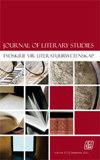The Multispecies City in McCarthy’s Suttree and Duiker’s Thirteen Cents
IF 0.1
4区 文学
0 LITERARY THEORY & CRITICISM
引用次数: 0
Abstract
“First-wave” ecocriticism focused on “nature writing” attuned to supposedly human-free wildness and its healing beauty. The presence of non-human life in cities was largely ignored. Now, numerous branches of interdisciplinary thought endeavour to transcend the culture/nature dichotomy, to recognise non-human agency, and to call for a more equitable formulation of urban “communities of conviviality.” Though cross-species interdependencies necessarily occur, attitudes vary according to multiple variables of class and education, socialisation and economic opportunity. Is such beneficent conviviality not a luxury permitted only to the cushioned and the safe? What happens to human-nature relations in urban areas or strata of poverty and precarity? The article compares two novels concerned with impoverished urban communities: Cormac McCarthy’s Suttree (1979) set in 1950s Knoxville, Tennessee, and K. Sello Duiker’s Thirteen Cents (2000), set in Cape Town. It attempts a reading sensitive to the intimate interfusion of material and imaginative manifestations of multiple species simultaneously.麦卡锡的《苏特里》和杜克的《十三美分》中的多物种城市
“第一波”生态批评关注的是“自然写作”,它迎合了所谓的没有人类的荒野及其治愈之美。城市中非人类生命的存在在很大程度上被忽视了。现在,跨学科思想的许多分支都在努力超越文化/自然的二分法,承认非人类的代理,并呼吁更公平地制定城市“娱乐社区”。虽然跨物种的相互依赖是必然发生的,但人们的态度因阶级、教育、社会化和经济机会等多种变量而有所不同。难道这种善意的欢娱不是只允许有缓冲和安全的人享受的奢侈吗?在城市地区或贫困和不稳定阶层,人与自然的关系会发生什么变化?这篇文章比较了两部与贫困城市社区有关的小说:科马克·麦卡锡的《苏特里》(1979)以20世纪50年代田纳西州诺克斯维尔为背景,k·塞洛·杜克的《十三美分》(2000)以开普敦为背景。它试图以一种敏感的阅读方式,同时对多种物种的材料和想象的表现形式进行亲密的融合。
本文章由计算机程序翻译,如有差异,请以英文原文为准。
求助全文
约1分钟内获得全文
求助全文
来源期刊

Journal of Literary Studies
Multiple-
CiteScore
0.50
自引率
0.00%
发文量
0
期刊介绍:
The Journal of Literary Studies publishes and globally disseminates original and cutting-edge research informed by Literary and Cultural Theory. The Journal is an independent quarterly publication owned and published by the South African Literary Society in partnership with Unisa Press and Taylor & Francis. It is housed and produced in the division Theory of Literature at the University of South Africa and is accredited and subsidised by the South African Department of Higher Education and Training. The aim of the journal is to publish articles and full-length review essays informed by Literary Theory in the General Literary Theory subject area and mostly covering Formalism, New Criticism, Semiotics, Structuralism, Marxism, Poststructuralism, Psychoanalysis, Gender studies, New Historicism, Ecocriticism, Animal Studies, Reception Theory, Comparative Literature, Narrative Theory, Drama Theory, Poetry Theory, and Biography and Autobiography.
 求助内容:
求助内容: 应助结果提醒方式:
应助结果提醒方式:


